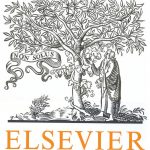
ترجمه مقاله نقش ضروری ارتباطات 6G با چشم انداز صنعت 4.0
- مبلغ: ۸۶,۰۰۰ تومان

ترجمه مقاله پایداری توسعه شهری، تعدیل ساختار صنعتی و کارایی کاربری زمین
- مبلغ: ۹۱,۰۰۰ تومان
Abstract
This paper presents the utility validation of a model for knowledge management. The utility of the model will be validated through business process management (BPM). The model for knowledge management was already proposed in another article. The model was developed based on the real environment of knowledge management of two automotive companies. Specifically, the environment of the companies was in the field of Model Based Design software products. Business process management (BPM) was chosen because it allows the simulation and analysis in detail of the model. In the end this will give a brief overview about the success of using this knowledge management model in real life environments.
5. Discussion and conclusion
The present paper started from a model of knowledge management presented in another article (Plesa & Prostean, 2017). This model was proposed in the context of two automotive organizations which use Model Based Design technologies to develop software. The goal of the study was to validate the usability of the model in real life environments. The model of knowledge management is a model which encodes the tacit knowledge of organization into explicit knowledge. The tacit knowledge represents forty percent of the knowledge of an organization (Clarke & Rollo, 2001 quoted by Hamza, 2008) and this knowledge is owned by the employees. The above mentioned model was proposed in order to save at least a part of the tacit knowledge. The model of encoding the tacit knowledge in explicit knowledge has as main actors the new employee and the experienced employee.
The validation of the model was archived using Business Process Management (BPM) tools. An event-driven process chain (EPC) diagram from ARIS tool was used to develop the model. The diagram allows the simulation of the process. From this EPC diagram two possible cases were obtained. First case presents the integration process without the encoding of tacit knowledge and the second one with the encoding of tacit knowledge in explicit knowledge.